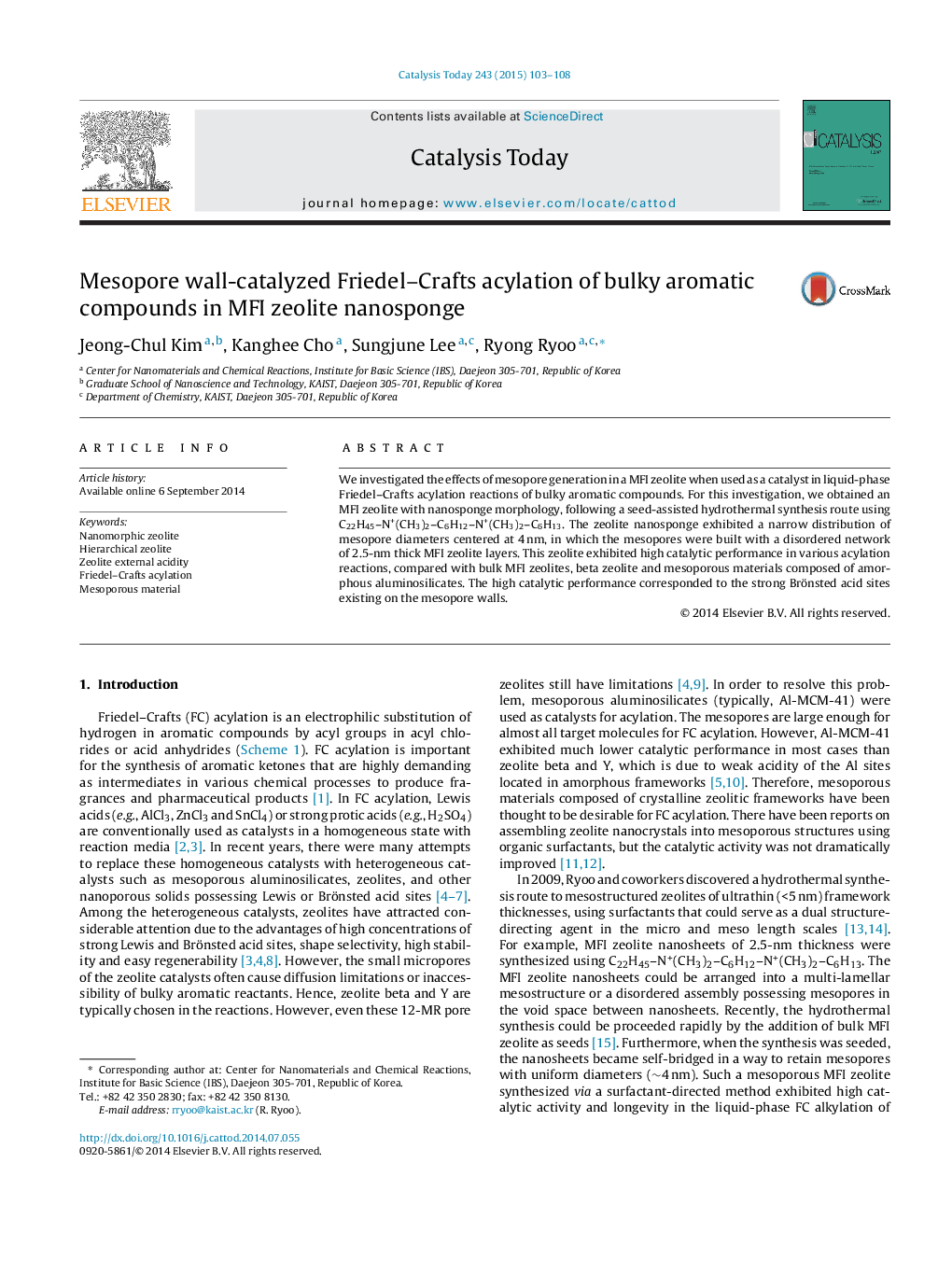| Article ID | Journal | Published Year | Pages | File Type |
|---|---|---|---|---|
| 54362 | Catalysis Today | 2015 | 6 Pages |
•A mesoporous MFI nanosponge was synthesized by seed-assisted hydrothermal synthesis method.•The MFI nanosponge shows high catalytic activity and high regenerability in FC acylation reaction.•The high catalytic activity can be explained by large amount of Brönsted acid sites existing on mesopore wall of the MFI nanosponge.
We investigated the effects of mesopore generation in a MFI zeolite when used as a catalyst in liquid-phase Friedel–Crafts acylation reactions of bulky aromatic compounds. For this investigation, we obtained an MFI zeolite with nanosponge morphology, following a seed-assisted hydrothermal synthesis route using C22H45–N+(CH3)2–C6H12–N+(CH3)2–C6H13. The zeolite nanosponge exhibited a narrow distribution of mesopore diameters centered at 4 nm, in which the mesopores were built with a disordered network of 2.5-nm thick MFI zeolite layers. This zeolite exhibited high catalytic performance in various acylation reactions, compared with bulk MFI zeolites, beta zeolite and mesoporous materials composed of amorphous aluminosilicates. The high catalytic performance corresponded to the strong Brönsted acid sites existing on the mesopore walls.
Graphical abstractFigure optionsDownload full-size imageDownload high-quality image (307 K)Download as PowerPoint slide
